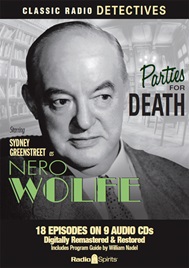
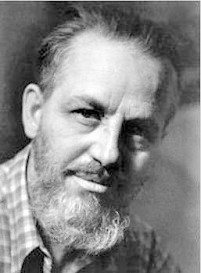 The New Adventures of Nero Wolfe (1950-51) aired “The Case of the Vanishing Shells” on February 2, 1951 as the 16th of the 26 episodes of this run. Prior to this radio reincarnation there were two earlier series, one in 1943 and another in 1945 (each short-lived), and relatively little is known about them with only two episodes now known to be in circulation. Thus, along with the 26 episodes of this 1950-51 series only 28 episodes survive. This is only the fifth Nero Wolfe episode we have showcased, the first two being in April and September of 2018, the third being from June of 2019, with the fourth offered in December of 2020. For newcomers to the series we reprise and slightly update the introductory material provided in that first episode.
The New Adventures of Nero Wolfe (1950-51) aired “The Case of the Vanishing Shells” on February 2, 1951 as the 16th of the 26 episodes of this run. Prior to this radio reincarnation there were two earlier series, one in 1943 and another in 1945 (each short-lived), and relatively little is known about them with only two episodes now known to be in circulation. Thus, along with the 26 episodes of this 1950-51 series only 28 episodes survive. This is only the fifth Nero Wolfe episode we have showcased, the first two being in April and September of 2018, the third being from June of 2019, with the fourth offered in December of 2020. For newcomers to the series we reprise and slightly update the introductory material provided in that first episode.
The Nero Wolfe radio programs were of course based on the popular mystery/detective novels of Rex Stout (1886-1975, photo at right). From the first Nero Wolfe novel in 1934 (Fer-de-Lance), Stout would write a total of 33 Wolfe novels and 39 novellas. Wolfe was given to us as a large man, described as being 5’11” and weighing “a seventh of a ton” (which is about 286 lbs.). Wolfe is an eccentric character in several respects. Due to his size he rarely leaves his home, avoids physical contact with both women and men, is fed gourmet meals served by his talented Swiss chef, reads voluminously, does not own a television, spends an inordinate amount of time tending his orchids, and apparently enters some kind of trance state when mentally solving crimes. This last is perhaps a reflection of the method by which Stout wrote the novels, for he has gone on record as saying he wrote them complete in his head before setting them to paper, and never reread them once finished. Rarely venturing outside the confines of his home, 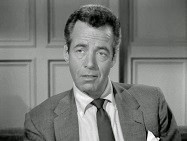 Wolfe relies on his able assistant Archie Goodwin to do the legwork–chasing down leads and clues and interviewing persons of interest. Verbal wordplay between Wolfe and Goodwin shows them at times to be at odds with one another, the amicable jibes springing from their contrasting personalities lending added spice to the stories. The debonair film and tv actor Gerald Mohr (1914-1968, photo at right) played Goodwin in episodes 13-16, but many old time radio fans also knew and loved him as the voice of Raymond Chandler’s hardboiled detective Philip Marlowe in that detective’s own series from 1948-51.
Wolfe relies on his able assistant Archie Goodwin to do the legwork–chasing down leads and clues and interviewing persons of interest. Verbal wordplay between Wolfe and Goodwin shows them at times to be at odds with one another, the amicable jibes springing from their contrasting personalities lending added spice to the stories. The debonair film and tv actor Gerald Mohr (1914-1968, photo at right) played Goodwin in episodes 13-16, but many old time radio fans also knew and loved him as the voice of Raymond Chandler’s hardboiled detective Philip Marlowe in that detective’s own series from 1948-51.
In 1958 Stout became the MWA’s 14th President, and in 1959 he was honored as the Mystery Writers of America’s third ever Grand Master, its highest award. At Bouchercon XXXI in 2000, the Nero Wolfe novels were nominated as Best Mystery Series of the Century, and Stout was nominated as Best Mystery Writer of the Century.

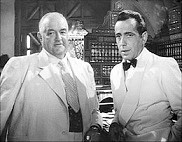 The New Adventures of Nero Wolfe starred the incomparable Sydney Greenstreet (1879-1954, photo top left and elsewhere) as Rex Stout’s iconic detective. Greenstreet is best known and remembered for his film roles, the first of which (at age 62) was as Kaspar Gutman (“The Fat Man”) in 1941’s The Maltese Falcon, opposite Humphrey Bogart as detective Sam Spade (photo at left). It was Gutman who had spent many years traveling the world and a sizeable fortune in search of the jewel-encrusted bird that was the McGuffin driving the plot in this now classic movie. His fourth film a year later in 1942 saw him in a secondary role in yet another of Hollywood’s classic films, Casablanca (photo at right), as Signor Ferrari, owner of the Blue Parrot, a rival establishment to Bogart’s character Rick Blaine and his Cafe Americain. Once again, Greenstreet was cast as an unsavory character, exemplified by Ferrari’s ironic statement: “As leader of all illegal activities in Casablanca, I am an influential and respected man.” Though beginning his film career at a late age, Sydney Greenstreet would have various roles in 24 films from 1941 through 1949, an average of three films a year. During this time he would share screen time with some of the biggest stars in Hollywood, including Spencer Tracy, James Stewart, Humphrey Bogart, Clark Gable, Ava Gardner, and Joan Crawford. Tennessee Williams wrote his play The Last of My Solid Gold Watches with Greenstreet in mind, dedicating it to him. It was at the end of his brief, eight-year film career in 1949 that Greenstreet took on the role of Nero Wolfe for radio. Stout is reported to have been highly pleased with Greenstreet in the role of his genius detective, and while a popular show it left the airwaves after 26 episodes, the advent of the new medium of television convincing potential sponsors to divert their advertising dollars to tv with its potentially larger national audience reach.
The New Adventures of Nero Wolfe starred the incomparable Sydney Greenstreet (1879-1954, photo top left and elsewhere) as Rex Stout’s iconic detective. Greenstreet is best known and remembered for his film roles, the first of which (at age 62) was as Kaspar Gutman (“The Fat Man”) in 1941’s The Maltese Falcon, opposite Humphrey Bogart as detective Sam Spade (photo at left). It was Gutman who had spent many years traveling the world and a sizeable fortune in search of the jewel-encrusted bird that was the McGuffin driving the plot in this now classic movie. His fourth film a year later in 1942 saw him in a secondary role in yet another of Hollywood’s classic films, Casablanca (photo at right), as Signor Ferrari, owner of the Blue Parrot, a rival establishment to Bogart’s character Rick Blaine and his Cafe Americain. Once again, Greenstreet was cast as an unsavory character, exemplified by Ferrari’s ironic statement: “As leader of all illegal activities in Casablanca, I am an influential and respected man.” Though beginning his film career at a late age, Sydney Greenstreet would have various roles in 24 films from 1941 through 1949, an average of three films a year. During this time he would share screen time with some of the biggest stars in Hollywood, including Spencer Tracy, James Stewart, Humphrey Bogart, Clark Gable, Ava Gardner, and Joan Crawford. Tennessee Williams wrote his play The Last of My Solid Gold Watches with Greenstreet in mind, dedicating it to him. It was at the end of his brief, eight-year film career in 1949 that Greenstreet took on the role of Nero Wolfe for radio. Stout is reported to have been highly pleased with Greenstreet in the role of his genius detective, and while a popular show it left the airwaves after 26 episodes, the advent of the new medium of television convincing potential sponsors to divert their advertising dollars to tv with its potentially larger national audience reach.
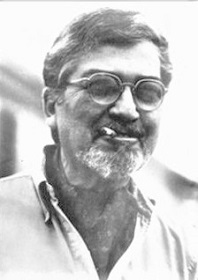 Of interest to SF fans is that none other than SFWA Grand Master Alfred Bester (1913-1987) wrote nearly all 26 episodes of the 1950-51 era Nero Wolfe reboot. Bester also penned scripts for other radio shows during the 1940s, among them Nick Carter–Master Detective, The Shadow, and Charlie Chan, several episodes of the first two we have presented here over the years. Those interested in timelines will note that The New Adventures of Nero Wolfe aired its final episode in late April of 1951. Alfred Bester’s classic, award-winning novel The Demolished Man began its three-part serialization in Galaxy magazine approximately eight months later, in January of 1952, winning the first-ever Science Fiction Achievement Award in 1953 (retroactively named the “Hugo” in 1955) following its book appearance in 1952. How long had Bester been working on this novel? Was it in the works while he was writing episodes of Nero Wolfe? Was it written after the radio show ended, and in a relatively short period of time? Given lead times for magazines to shepherd a typewritten story through the editing and production process to finished product and to appear on the newsstand or in a bookstore, the novel could possibly have been written and fast-tracked by editor Horace Gold during the eight months between the demise of Nero Wolfe, if indeed it was begun after the show ended. It’s interesting to speculate on such rather peripheral matters, so in the spirit of these things I would guess the novel was in the works before the Nero Wolfe series came to its end. In either case, Bester was a busy man at the time writing for two mediums, each with distinct requirements and not something every writer could do, and do well.
Of interest to SF fans is that none other than SFWA Grand Master Alfred Bester (1913-1987) wrote nearly all 26 episodes of the 1950-51 era Nero Wolfe reboot. Bester also penned scripts for other radio shows during the 1940s, among them Nick Carter–Master Detective, The Shadow, and Charlie Chan, several episodes of the first two we have presented here over the years. Those interested in timelines will note that The New Adventures of Nero Wolfe aired its final episode in late April of 1951. Alfred Bester’s classic, award-winning novel The Demolished Man began its three-part serialization in Galaxy magazine approximately eight months later, in January of 1952, winning the first-ever Science Fiction Achievement Award in 1953 (retroactively named the “Hugo” in 1955) following its book appearance in 1952. How long had Bester been working on this novel? Was it in the works while he was writing episodes of Nero Wolfe? Was it written after the radio show ended, and in a relatively short period of time? Given lead times for magazines to shepherd a typewritten story through the editing and production process to finished product and to appear on the newsstand or in a bookstore, the novel could possibly have been written and fast-tracked by editor Horace Gold during the eight months between the demise of Nero Wolfe, if indeed it was begun after the show ended. It’s interesting to speculate on such rather peripheral matters, so in the spirit of these things I would guess the novel was in the works before the Nero Wolfe series came to its end. In either case, Bester was a busy man at the time writing for two mediums, each with distinct requirements and not something every writer could do, and do well.
“The Case of the Vanishing Shells” has Archie taking on a case for Nero involving a Broadway actress who is threatened with bodily and financial harm if she accepts the lead role in a new play. Who is behind the threats is of course the main question at hand, but the why is where the plot thickens and gets complicated. Nero is soon on the case including or excluding suspects when a prominent member of the play is murdered, adding yet another layer to the already convoluted series of events. In the grand fashion of the great softboiled detectives before him (think Nick Charles in The Thin Man film for one early example), Wolfe gathers the primary suspects and grills them with loaded questions guaranteed to elicit a certain reaction. Sure enough, the pressure overcomes the guilty party and the original case, along with the murder, are now solved. But it is the ins and outs, the ups and downs of the case that are the most challenging parts of the mystery, drawing the listener in and asked to play along and match wits with Wolfe as he pieces together the various clues to discover the guilty party or parties. But most of all how the titular vanishing shells become the crucial clue to solving the mystery.
(The linked CD at top includes this episode and 17 others.)
Play Time: 28:36
{This episode aired at 8 PM on a Friday night in early February of 1951, meaning the neighborhood gang would be up and at it early Saturday morning before heading to the nearby newsstand for more detective fare from some of their favorite mystery/detective pulps. Black Mask (1920-51) was the undisputed king of the detective pulps, having run Dashiell Hammett’s classic The Maltese Falcon as a serial beginning in 1929. It and many other iconic stories testified to its well earned reputation. It was a bi-monthly in 1951 though it folded with its July 1951 issue, for a total of 4 issues that final year. Detective Tales (1935-53) was a highly successful detective pulp. It ran for 18 years and 212 issues, most of which contained 12 stories. It managed 8 issues in 1951, the first four being monthly while the final four were bi-monthly. New Detective (1941-53) ran more or less the usual crime fiction with the focus on police detectives, many of which were penned by the most popular authors in the field. It saw 73 issues, at which time it merged with Detective Tales in August of 1953 to then be titled Fifteen Detective Stories. New Detective was a bi-monthly in 1951.}
[Left: Black Mask, Jan. 1951 – Center: Detective Tales, Feb. 1951 – Right: New Detective, Feb. 1951]
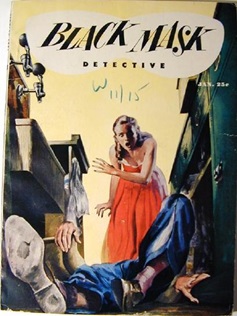
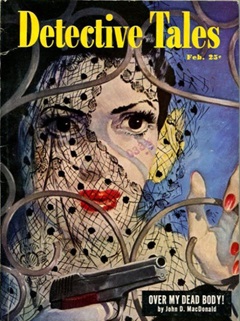
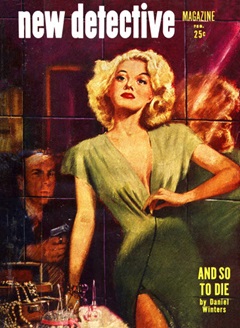
To view the entire list of weekly Old Time Radio episodes at Tangent Online, click here.